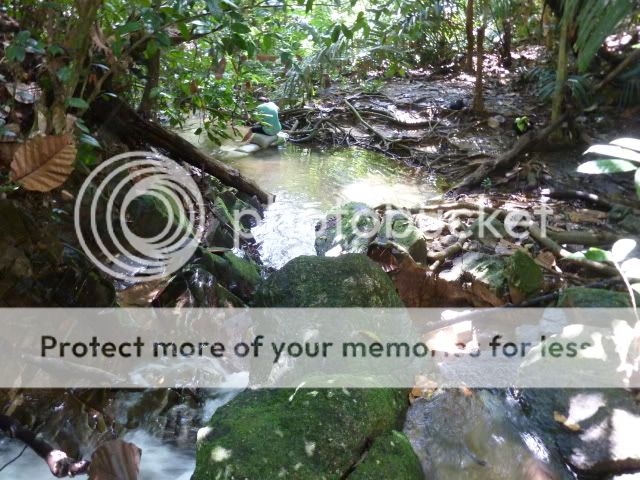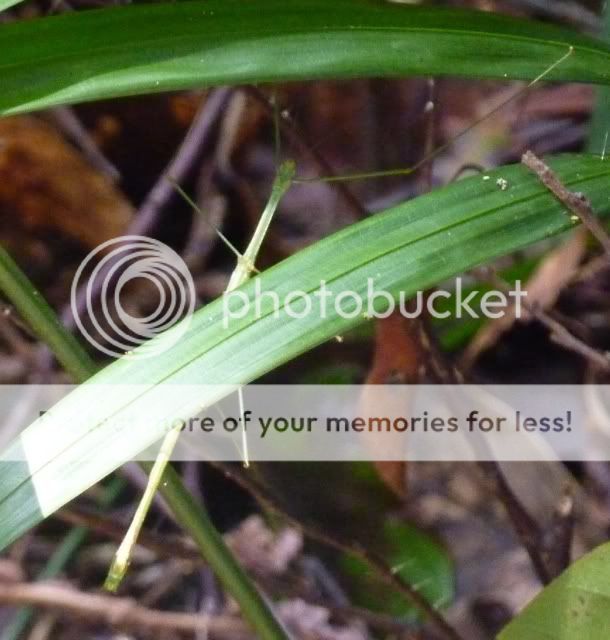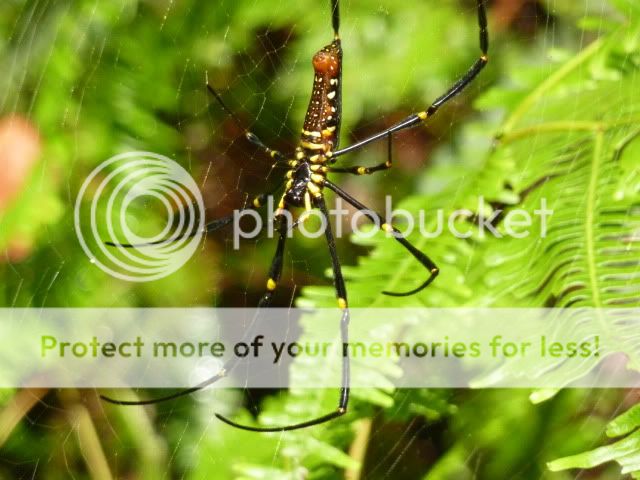At a trailhead of the
Pelindung Trail one day, we talked with a gentleman who told us about a waterfall on one of the small streams that drain the ridge along which the trail runs. (My topographic map shows two stream systems draining the northern side of the ridge: Mengabang Tumpat and an unnamed stream draining into Teluk Tongkang.) Getting vague directions from him, we decided to tackle the trail down to the waterfall another day. In fact, we went the very next day.
I am reluctant to give explicit directions on the internet, however, as my experience with large groups using an area is one of trash and disregard for the natural environment. If you ever meet me on the trail, perhaps I will be as kind as the gentleman whom we met on the trail.
 |
| How the public-at-large treats natural areas |
The upper part of the Pelindung Trail reaches an elevation of around 220 meters above Mean Sea Level, which is about 720 feet. The ridge along which the trail runs has quite a steep dropoff either side with small defiles (
zero-order streams) cutting into it. These eventually begin to show surface-water flow which labels them as first-order streams. Two of these come together downslope and form a nice pool with a 3-4 foot waterfall.
Before we reached the waterfall, we came to very large granite boulders, which contained some interesting erosional features, and were populated with epiphytes.
 |
| Erosion channels under granite boulder |
The boulder above shows an erosion feature that I had not seen before. I suggest that monsoonal rains, blown in or else running in from above, wicks and runs down the underside of the boulder cutting the tracks and speeding up the chemical degradation of the rock face.
 |
| Granite chimney; great for climbers |
 |
| Epiphytes atop granite boulder |
There was also evidence of the jungle boars using the space under boulder overhangs as sleeping sites.
 |
| Wild boar hotel |
And "constructing" a mudhole nearby as a
wallow.
 |
| Wild boar wallow |
Leaving the spur ridge, we made our way down to the waterfall, which occurs just upstream from a pool where either two first-order streams meet, or a first-order joins a second-order.
 |
| Two small streams join below waterfall |
 |
| Looking downstream at pool from lip of waterfall |
The pool has coarse sand from the erosion of granite on its bottom, and is populated by small fish and prawns. If you sit for a while dangling your feet in the water, the fish will come up and give you a "massage", which is basically them picking at the dry skin on your feet. The prawns come along eventually, probably more to get the fish that are clustering at your feet.
 |
| Fish foot massage |
The white noise from the waterfall is very soothing to listen to. I would love to have that sound for my bedroom so that street noises and the neighbors' nighttime karaoke sessions would have no effect on my sleep.
Talking a stroll down the stream channel brought interesting discoveries, including a small frog
 |
| Secret waterfall frog, notice the coarse sand from granite degradation |
and exposed clay faces, scraped from the stream bottom
 |
| Clay scraped from exposed surfaces on stream bottom |
stream bottom bedrock (no sediment cover)
and streamside fracture planes
 |
| Bedrock fracture planes |
and bugs trying their best to stay hidden
 |
| Bug camo |
Later, I tried to find these streams using Google Earth, but with near-complete canopy coverage over these first- and second-order streams, this is nearly impossible. One would need an infra-red scan or other method that "sees" past the vegetation.
 |
| Someplace Google Earth cannot reach |
After a relaxing time at the pool and in the stream, we had to dry off the feet, re-shoe and head back uphill. The climb back uphill (and downhill for that matter) are not for the faint-hearted, lazy, weekend trash-throwers, and unappreciative, thus, I will spare you all the details and directions. But if we should ever meet, on the Pelindung Trail, and you are nice to me, and look fit, and don't appear to tossing garbage about ...






































